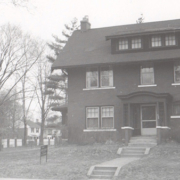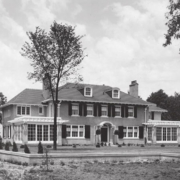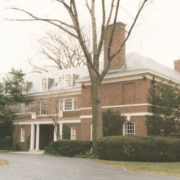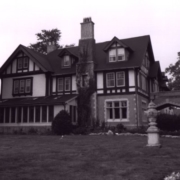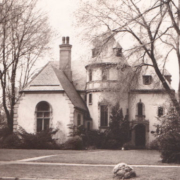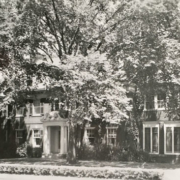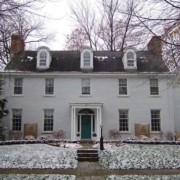Historical Architecture of Grosse Pointe – the changing face of architecture: Cadieux Road
In 1835 a Frenchman named Michael Cadieux bought the land, which is now known as Cadieux road. It was one of the many ribbon farms that dotted the waterfront in Detroit and the Grosse Pointes during that era.
The Cadieux family has a long and rich history in the Detroit area and Cadieux road is a landmark in the community.
Prior to 1900, many homes in the area were typical French farmhouses. As Grosse Pointe transitioned from a farming community into a year round residential neighborhood the style of the homes underwent a dramatic transformation.
1892
Cadieux Road was one such location that played witness to the transition from farmhouse style residences to more modern style homes that were popular at the time. In 1892, the Theodore F. Damerow House, possibly one of the last farmhouse style homes on this plot, was constructed at 600 Cadieux (the address of this house is now 16935 Maumee Avenue) the date for the change is address is unknown.
At the dawn of the twentieth century the architectural style of homes in Grosse Pointe and the City of Detroit was changing quickly. Many of the leading architects in Detroit were becoming influenced by the Craftsman Style, also known as the Arts and Crafts style, which was based on the Arts and Crafts movement in Europe, spearheaded by William Morris. Several prominent designers, at the time, including Albert Kahn and William B. Stratton were keys figures in the growth of the arts and crafts movement within the city, which included The Detroit Society of Arts and Crafts along with an annual exhibition (starting in 1904) held at the Detroit Museum of Art.
Many of the small arts and crafts homes that were built during this era are believed to have been influenced by the California bungalow style. The design(s) featured a ‘planned decor’ with much of the interior constructed from the same carved and polished wood, giving it a very cohesive artistic style throughout.
1911
A great example of one such smaller Arts and Craft home is 560 Cadieux. Built at the height of this architectural movements popularity, this house was created in 1911 by architect Frank E. Hill for the Breitenbach family.
We can find very little information on Frank E. Hill, if anyone has more information we would love to hear more about him. His client, Harold Prell Breitehbach, taught English at the University of Michigan, moved into his new residence with his wife and two year old daughter.
At the time of construction there were only a few homes on Cadieux and so it was surrounded by an abundance of open space. Constructed of brick the 1,876 sq ft home consists of a large entry hall, a living room (14’ x 23’ sq ft) with a natural fireplace, a large formal dining room (12’ x 14’ sq ft), along with 3 bedrooms. The master bedroom included a natural fireplace while a nursery was located off of this room. Research from the Grosse Pointe Historical Society states that much of the interior of this home features beautiful oak woodwork, including the floors, an oak paneled dining room, and an oak paneled stairway wall with built-in window seat. The living room reportedly contained a Pewabic tile fireplace and based on the research by the Grosse Pointe Historical Society the vestibule had ‘door lights that featured a circular leaded glass pattern similar to that used by Frank Lloyd Wright’.
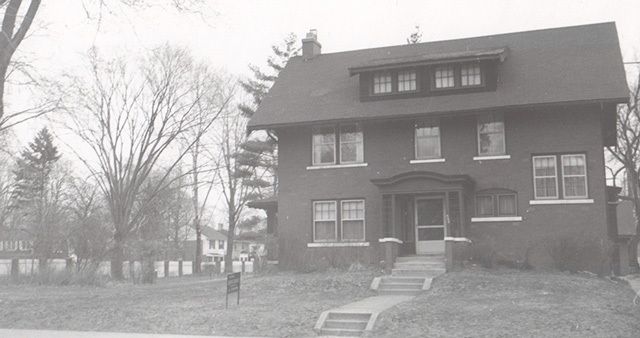
Grosse Pointe Historical Society also confirms the Breitenbach’s daughter, Lois, moved back to 560 Cadieux, from Chicago, in the 1960’s and lived there until approximately 2000 when she moved into a nursing home.
At some point during the homes history the large lot was divided and an additional house was built on the grounds, which faces Village Lane.
1924
In 1924 the Breitenbach family had new neighbors’ when Windwood Manor was constructed at 570 Cadieux. The large estate, which sits on four lots, is home to the 4,173 Federal Style home built for Walter J. Hayes, a former Michigan State senator.
The story of Cadieux Road from 1835, when Michael Cadieux first purchased the land until present day continues to evolve. The architectural scene has changed dramatically from those early farmhouses, to include a trendy arts and crafts residence, a Federal style manor through to the construction of a modern style home for William Kessler in 1959, located at 1013 Cadieux.
The transition in architectural styles on Cadieux is one that typifies the changing face of design in Grosse Pointe.
*Photos courtesy of the Higbie Maxon Agney archives unless stated.
Written by Katie Doelle
© 2016 Katie Doelle

